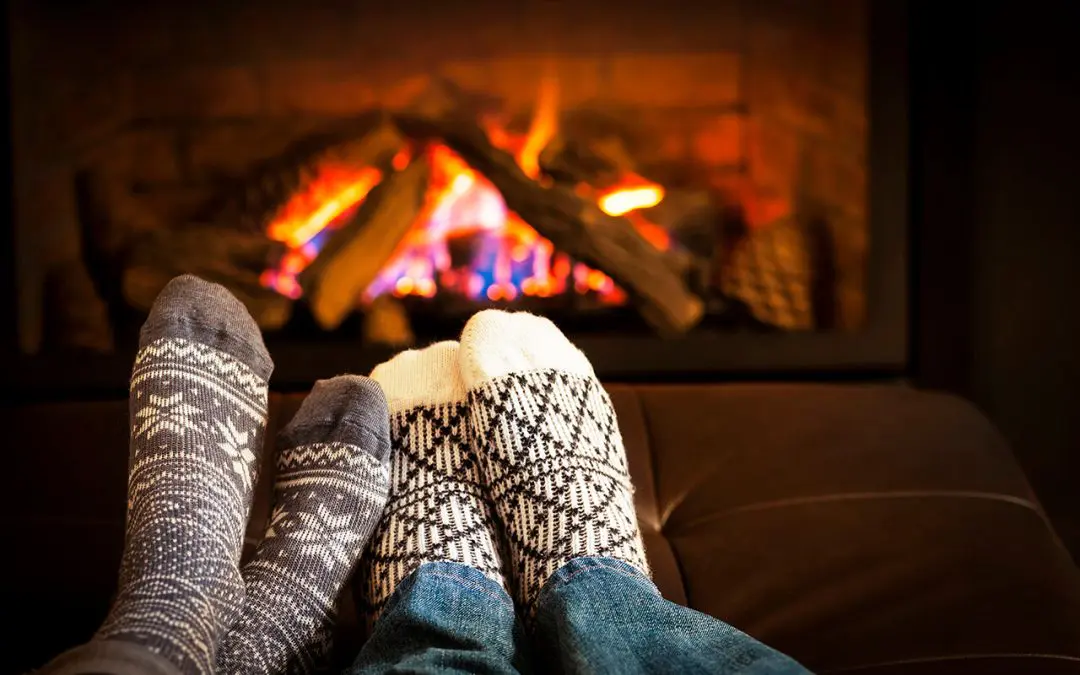Few things are as comforting in the colder months as gathering around a warm, crackling fireplace. While the allure of a roaring fire is undeniable, it’s important to improve fireplace safety to ensure your cozy winter evenings don’t result in an accident. Here are a few essential tips and advice for homeowners to keep their fireplaces in top condition and enjoy the warmth of the flames safely.
Improve Fireplace Safety
Schedule a Professional Inspection
Before building a fire, schedule a thorough inspection by a certified chimney professional. A chimney expert will identify issues such as creosote buildup, blockages, or structural concerns that compromise the safety of your fireplace.
Regular Chimney Cleaning
A byproduct of burning wood, creosote, can accumulate inside your chimney and pose a serious fire risk. This residue is a flammable material that can ignite, leading to a fire. Regular chimney cleaning is essential to remove creosote. Aim for an annual cleaning, but consider more frequent cleanings if you use your fireplace often.
Choose the Right Firewood
The type of wood you burn impacts the efficiency of your fireplace and its safety. Opt for well-seasoned hardwoods like oak or maple, which burn cleaner and produce less creosote. Don’t use unseasoned wood, as the moisture content in “green” wood can lead to increased creosote buildup.
Properly Dispose of Ashes
Dispose of fireplace ashes safely by allowing them to cool completely before removing them from the fireplace. Place the ashes in a metal container with a lid and store them away from the house and flammable materials. Hot embers can remain in seemingly cold ashes, so exercise caution.
Use a Fireplace Screen to Improve Safety
A fireplace screen is a barrier between the flames and the room, preventing sparks from escaping. A screen is especially important if you have children or pets who might be curious about the fire.
Maintain a Safe Zone
Keep the area around your fireplace clear of combustible materials. Furniture, curtains, rugs, and decorations should be at least five feet away to reduce the risk of accidental fires.
Improve Fireplace Safety: Monitor the Fireplace Damper
The damper controls the airflow in your chimney, affecting the combustion process. Keep the damper open when starting a fire to allow for proper ventilation. Close it when the fireplace is not in use to prevent drafts and reduce heat loss.
Install Carbon Monoxide Detectors
Fireplaces produce carbon monoxide (CO), a colorless and odorless gas that can be harmful in high concentrations. Install CO detectors throughout the house, including near sleeping areas, to ensure early detection of this gas in your home.
Practice Responsible Fire Building
Build fires responsibly by arranging logs at the back of the fireplace and using kindling to start the fire. Don’t overload the firebox with too much wood, as this can lead to out-of-control flames and excessive heat.
A well-maintained fireplace provides warmth, comfort, and ambiance throughout winter. By following these tips and incorporating responsible fireplace practices, homeowners can enjoy a safe fireside experience. Stay warm, stay safe, and embrace the cozy atmosphere of your fireplace with confidence this winter.
HomeVantage Home Inspections offers professional inspections to homebuyers and sellers in Northern New Jersey. Contact us to request our services.

